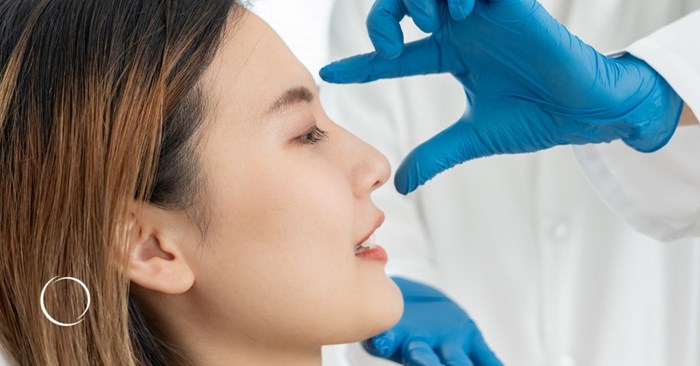The science behind rhinoplasty: Can a nose job change the way you breathe?

Your nose is one of the most prominent features of your face. It gives your face character. Sometimes, people want to change that "character" and reshape their nose, refine its features, slim it down or eliminate a pronounced hook or bump.
The nose may be the first thing you see when you look in the bathroom mirror, but it is more than an aesthetic feature. Internally, the anatomy of the nose serves significant biological functions. Not only is it the entrance to your respiratory system, but delicate internal nasal structures also help you breathe by warming the air you inhale, filtering allergens and germs, providing drainage and enabling your sense of smell. The size and shape of your nose can also contribute to the sound of your voice.
What happens when you reshape the nose with rhinoplasty? Are you changing its interior structures in addition to its outward appearance? It's time to get the skinny on whether a nose job can change how your nose functions.
Can a nose job change how the nose functions?
American Society of Plastic Surgeons statistics show a six percent increase in patients seeking rhinoplasty from 2022 to 2023, with almost 50,000 people undergoing a nose job. Many people look to rhinoplasty to change the size or shape of their nose for aesthetic reasons. However, when you change the outward appearance of the nose, are you also altering the internal shape and structure? Can those changes and alterations impact how the nose functions? In a word: Absolutely.
So, can rhinoplasty alter the shape of internal structures in the nose?
"Yes! A rhinoplasty can, and does, definitely alter the internal structures of the nose," said Anureet Bajaj, MD.
In fact, the answer is in the name of the procedure itself.
"'Rhino,' from the Greek for 'nose,' and 'plasty,' from the Greek for 'to shape or form,' describes procedures to alter the nose structures," said Jeffrey Roth, MD, FACS. "This can include altering the internal structures of the nose."
So, if changing the size and shape of your nose's outward appearance also impacts internal nasal structures, what do you need to know before undergoing rhinoplasty?
"If the internal structures are changed, it can affect how a person breathes," said Dr. Bajaj. "These types of changes can go both ways – helping or hurting the way a person breathes. For example, when removing a hump, if the nose is narrowed with the bones fractured and reset, it can impair or restrict airflow through the nose. Conversely, many times, surgeons will place a specific type of cartilage graft (known as a spreader graft) to improve airflow through the nasal airway."
Any alteration to a functional part of the human body can potentially cause adverse side effects. However, as Dr. Roth explained, some procedures can also help improve nasal function and may even improve a person's breathing.
"A septoplasty can change airflow as it straightens the septum of the nose," said Dr. Roth. "A turbinectomy can be very effective in increasing the airflow as the turbinates do not protrude as much, and airflow can be significantly improved. Spreader grafts, made of cartilage harvested from the septum, can be used to keep the internal valve open and improve airflow."
Aesthetic vs functional
What patients may not understand is that there may be functional advantages to rhinoplasty.
"Rhinoplasty can be both aesthetic and functional," said Dr. Roth. "For instance, addressing issues with the septum can improve airflow and appearance. Rhinoplasty is a procedure that attempts to strike a delicate balance between form and function. This is one reason why it can be so challenging, but at the same time so rewarding."
A rhinoplasty may seem purely cosmetic, but benefits can go as far as improving airflow to help patients breathe easier.
"If a person has a nasal or septal deviation, it can obstruct airflow through the nose," said Dr. Bajaj. "A rhinoplasty can be performed to improve this airflow." She agreed that rhinoplasty can blend both aesthetic and functional goals.
Talk to a board-certified plastic surgeon who is an ASPS member about your aesthetic goals and how they may impact the function of your nose if you are considering a rhinoplasty. An experienced surgeon can help you understand surgery's benefits and potential drawbacks. You'll want a balanced look, but you also want to be able to breathe! A skilled plastic surgeon can help enhance the reflection you see in the bathroom mirror and how the nose works.
To find a qualified plastic surgeon for any cosmetic or reconstructive procedure, consult a member of the American Society of Plastic Surgeons. All ASPS members are board certified by the American Board of Plastic Surgery, have completed an accredited plastic surgery training program, practice in accredited facilities and follow strict standards of safety and ethics. Find an ASPS member in your area.
